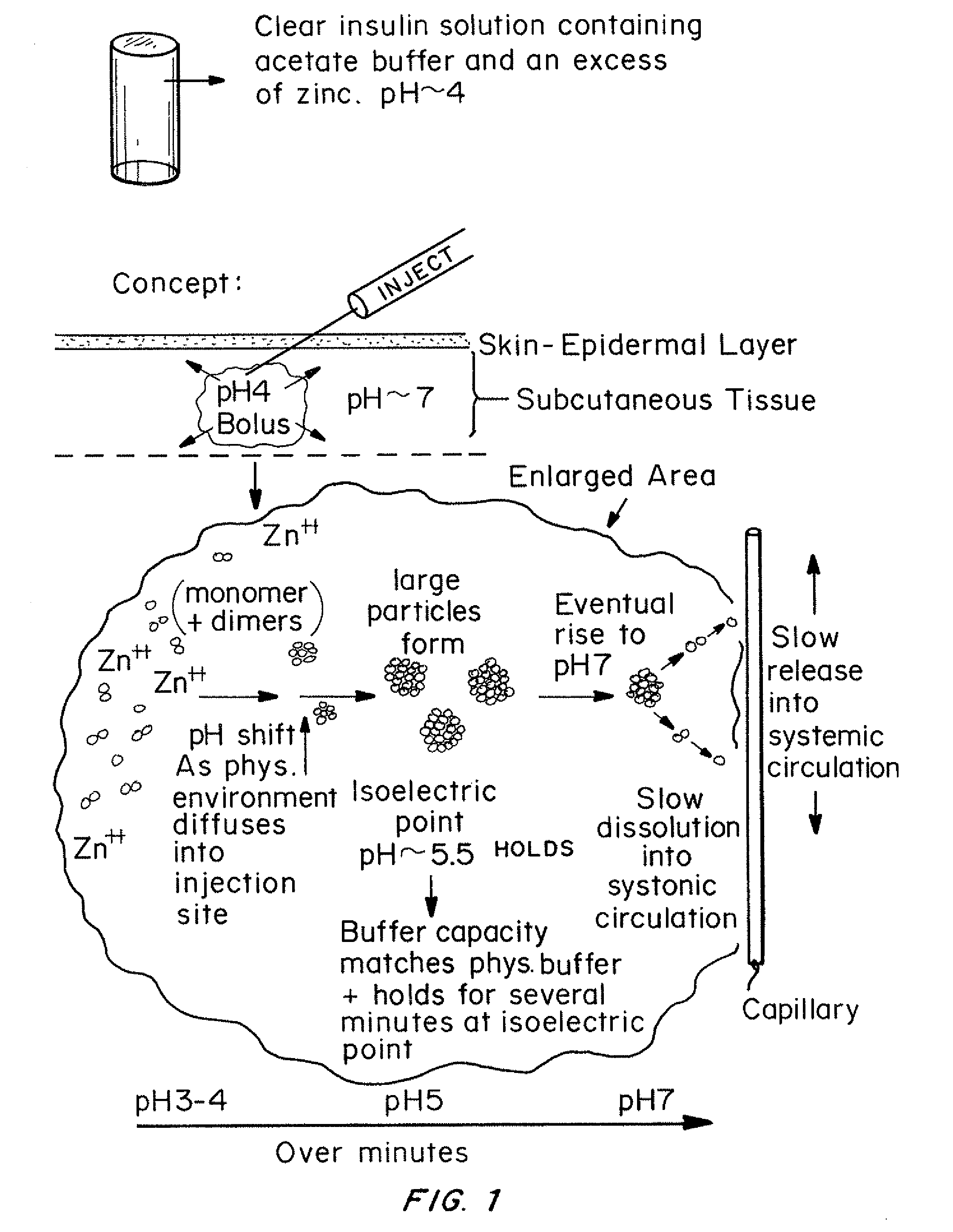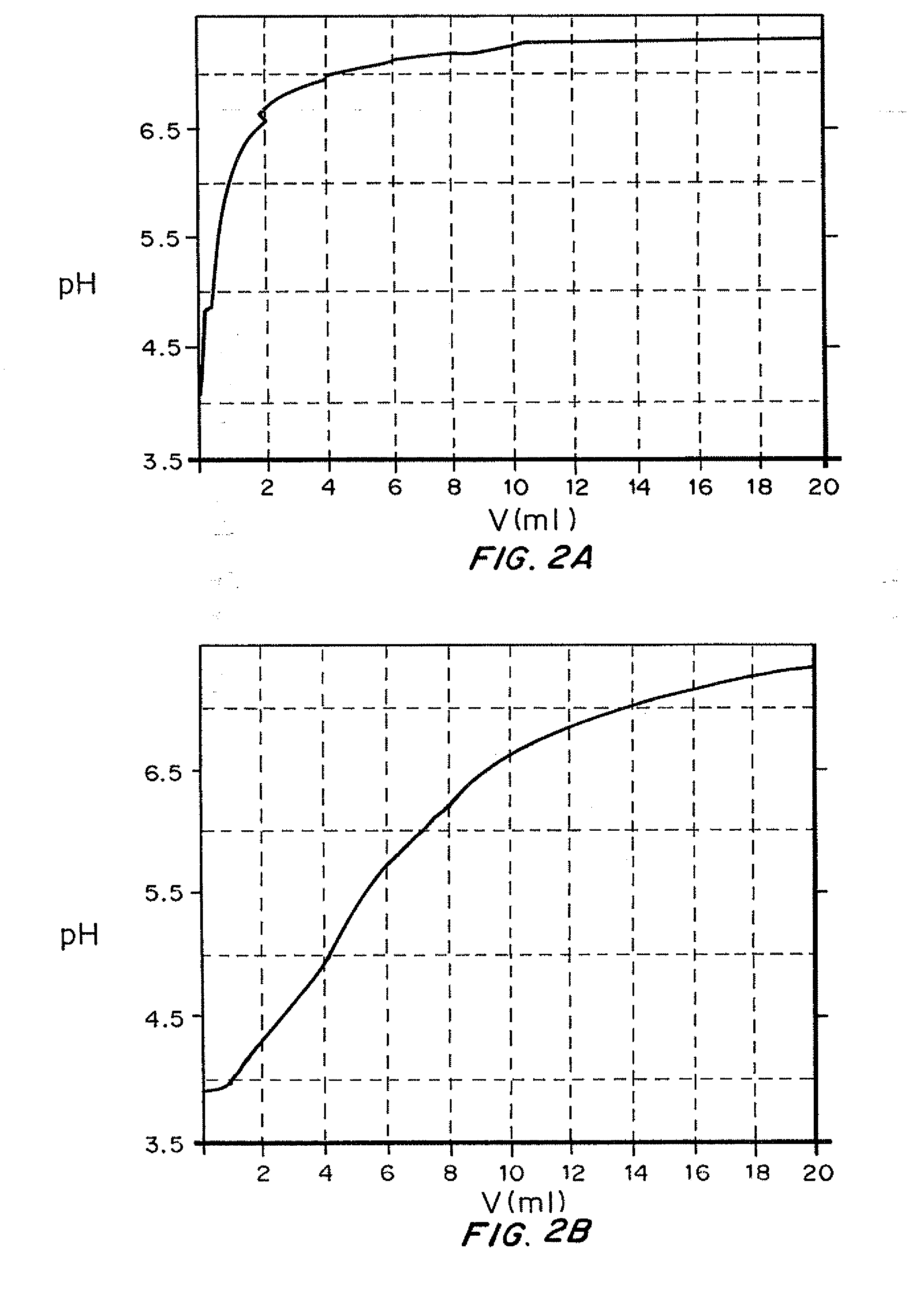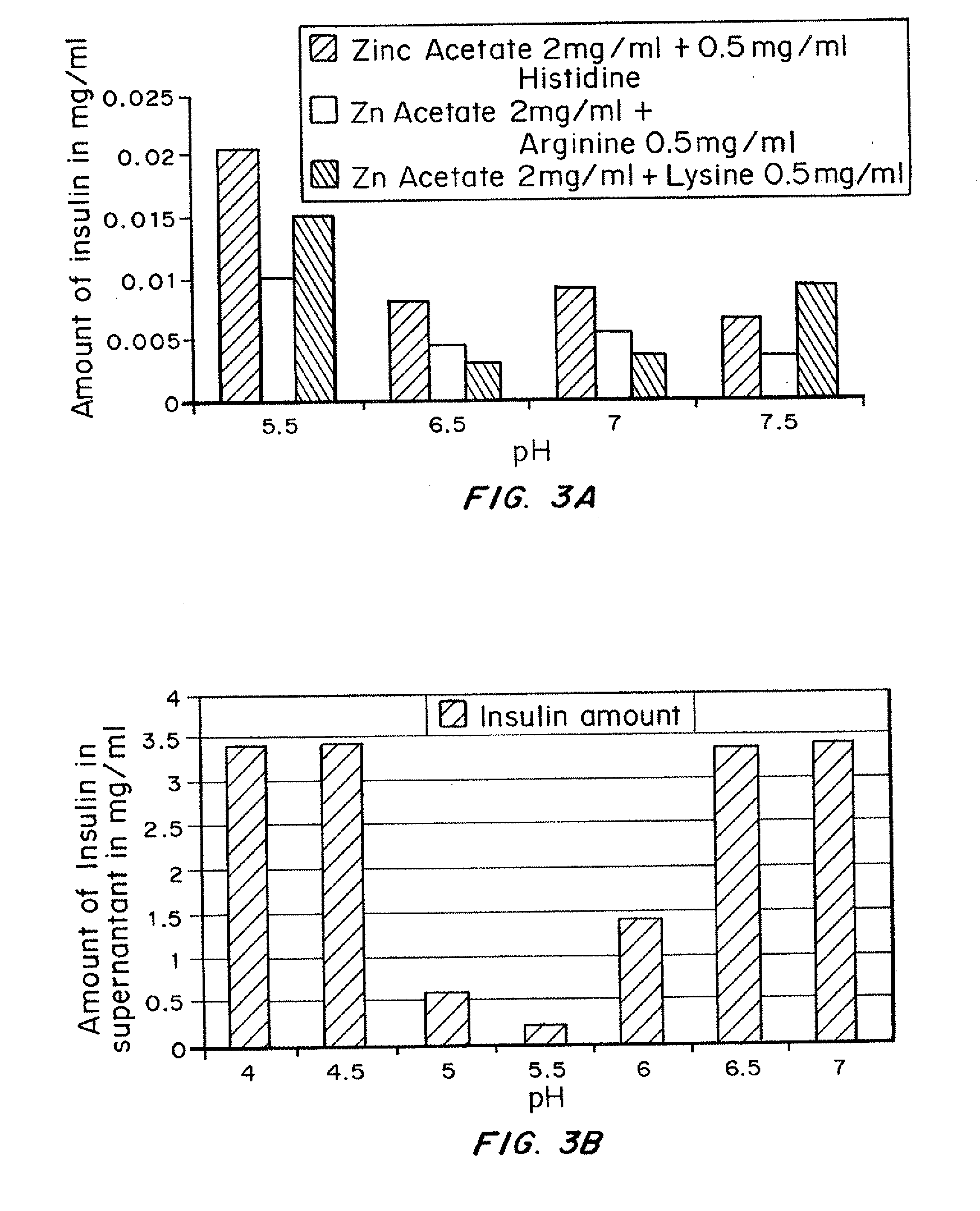Insulin with a basal release profile
a basal release and insulin technology, applied in the field of insulin forms, can solve the problems of interfering with the ability of proteins, abnormally high blood glucose levels and inadequate levels of insulin, and patients with diabetes who eat too much,
- Summary
- Abstract
- Description
- Claims
- Application Information
AI Technical Summary
Benefits of technology
Problems solved by technology
Method used
Image
Examples
example 1
Demonstration of the Effectiveness of the Addition of Sodium Acetate in Holding an Insulin Solution in the Isoelectric Range During Dilution in Extracellular Fluid
[0079]Materials and Methods
[0080]In this experiment, the buffering effect of sodium acetate in a basal insulin formulation was demonstrated by monitoring the pH of the formulation with an automatic titrator while diluting the solution with synthetic extracellular fluid buffer (ECF). The purpose was to mimic the environment (pH and dilution) of the basal injection in vitro to determine if it was likely the clear solution would precipitate in situ as it transitioned through the isoelectric point.
[0081]Two different formulations were prepared. Formulation A contained 100 IU insulin and 3 mg / ml Zinc chloride. Formulation B contained 100 IU 3 mg / ml Zinc chloride and 6 mg / ml sodium acetate. Initial volume was 2 ml for both formulations. Then the formulations were titrated with ECF buffer to observe their pH profile.
[0082]Results...
example 2
Comparison of Insulin Solubility at Various pH Using Different Amino Acids
[0086]Materials and Methods:
[0087]The purpose of this study was to identify the effect of various amino acids on the solubility of basal insulin formulations at a given pH and concentration.
[0088]The test formulation containing 2 mg / ml of Zinc Acetate, 0.5 mg / ml of Histidine, Arginine or Lysine and 100 U / ml insulin was prepared and adjusted to pH 4. Then the pH 4 formulations were adjusted to pH 5.5, 6.5, 7 or 7.5 and samples were centrifuged. For comparison, insulin alone was adjusted to pH 4, 4.5, 5, 4.5, 5, 5.5, 6, 6.5 or 7.
[0089]The quantity of insulin in the supernatant was determined by HPLC (High Performance Liquid Chromatography) analysis. The reverse phase chromatography was performed on a C-18 column, a mobile phase composition of 71 ml Water: 20 ml Acetonitrile: 9 ml Tetrahydrofuran and 0.1% TFA and a variable wavelength detector set at 210.0 nm. The HPLC acquisition parameters were: flow rate 1.0 ...
example 3
Effect of pH on Solubility of Insulin in a Formulation Containing Insulin 100 IU / ml, Zinc Acetate 2 mg / ml, and Different Concentrations of Histidine 0.5 mg / ml, Arginine or Lysine
[0094]Materials and Methods:
[0095]The purpose of this study was to identify whether formulations containing zinc in combination with histidine, arginine or lysine would be less soluble as they precipitate and are exposed to increasing pH environments. This in vitro test was designed to illustrate the pH change of the environment following a subcutaneous injection in viva.
[0096]The test formulation containing 2 mg / ml of Zinc Acetate, various concentrations of Histidine or Arginine or Lysine and 100 U / ml insulin was prepared and adjusted to pH 4. Then the pH 4 formulation was adjusted to pH 5.5, 6.5, 7 and 7.5 and samples were centrifuged. The quantity of insulin in the supernatant was determined by HPLC (High Performance Liquid Chromatography) analysis. The reverse phase chromatography was performed on a C-18...
PUM
| Property | Measurement | Unit |
|---|---|---|
| concentration | aaaaa | aaaaa |
| concentration | aaaaa | aaaaa |
| concentration | aaaaa | aaaaa |
Abstract
Description
Claims
Application Information
 Login to View More
Login to View More - R&D
- Intellectual Property
- Life Sciences
- Materials
- Tech Scout
- Unparalleled Data Quality
- Higher Quality Content
- 60% Fewer Hallucinations
Browse by: Latest US Patents, China's latest patents, Technical Efficacy Thesaurus, Application Domain, Technology Topic, Popular Technical Reports.
© 2025 PatSnap. All rights reserved.Legal|Privacy policy|Modern Slavery Act Transparency Statement|Sitemap|About US| Contact US: help@patsnap.com



